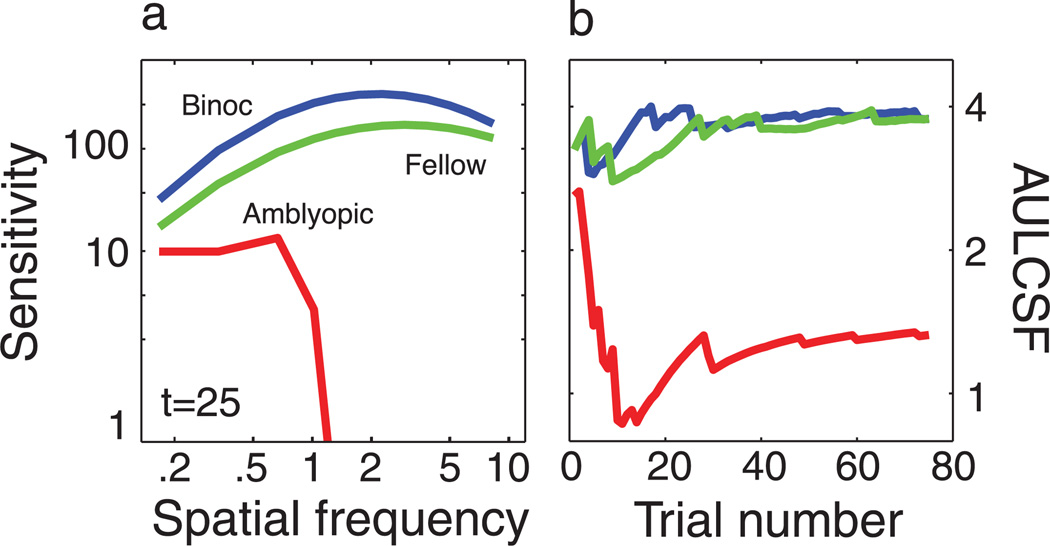Figure 6.
Clinical application. The qCSF was applied to characterize contrast sensitivity functions in an amblyope. (a) Spatial CSFs were measured in three conditions: (1) one binocular CSF; (2) one monocular CSF measured in the amblyopic eye; and (3) one monocular CSF measured in the fellow eye. Spatial CSFs obtained with only 25 trials demonstrate a severe contrast sensitivity deficit, which is likewise apparent in (b), the AULCSF estimate with as few as 10 trials. AULCSF estimates are approximately stable after 25 trials. One important feature of the qCSF’s stimulus placement strategy is the high rate of evoked performance: this observer completed 75 trials with a comfortable performance level of 84% correct.

